Roofing alternatives have come a long way from the days of traditional asphalt shingles and clay tiles.
As our appreciation of sustainable building practices has grown, so too have the number of materials available to both professionals and DIYers.
In this blog post, we’ll examine the benefits of modern roofing alternatives that offer more than just a stylish look, such as energy efficiency, durability and eco-friendliness.
From synthetics to a green roof, these modern solutions offer unique advantages over their conventional counterparts. So whether you’re considering a roof replacement or embarking on a new construction project, read on for insights into today’s most popular roofing alternatives!
Table of Contents:
- Slate Roofing: Affordable Roofing Alternatives
- Composite Tile Roofs: An Eco-Friendly and Durable Choice
- Green Living Rooftops: A Breath of Fresh Air for Your Home
- Blue Roofing Solutions: Sustainable Alternatives
- Popular Roofing Materials: Asphalt Shingles and Metal Roofs
- Wooden Cedar Shake Roofs: A Charming and Eco-Friendly Choice
- Clay Tile Roofs: A Durable and Stylish Choice
- FAQs in Relation to Roofing Alternatives
- Conclusion
Synthetic Slate Roofing: Affordable Roofing Alternatives
Let’s face it, traditional slate tiles are beautiful but can be quite pricey. That’s why synthetic roofing is becoming increasingly popular among budget-conscious homeowners and builders alike.
Made from lightweight materials, these imitation slates offer impressive warranty periods of up to 50 years while still maintaining the charm of natural stone.

Advantages of Synthetic Over Traditional Slate
Synthetic one is not only more affordable than its natural counterpart but also offers other benefits. These include easier installation due to lighter weight material, less maintenance required over time, and better resistance against harsh weather conditions and impact damage.
Installation Process and Maintenance Requirements for Synthetics
The installation process for the slates is similar to that of traditional ones, with some differences in handling due to their lighter weight. Rolled roofing is one type of synthetic that can be used.
In terms of maintenance, you’ll find that synthetics require less attention compared to natural ones – just occasional cleaning and inspection for any damage.
It’s time to contemplate if this economical substitute for natural slate is the correct selection for your forthcoming venture. Remember, a good roofing material doesn’t have to break the bank. Other materials to consider include a flat roof, metal roof, wood roof, rubber roofing, and more.
Composite Tile Roofs: An Eco-Friendly and Durable Choice
Let’s talk about composite tile roofs. These innovative materials are not only eco-friendly but also durable, making them an excellent choice for environmentally-conscious homeowners or professionals such as contractors, surveyors, and architects.
Composite tiles, produced from reused materials, are not only eco-friendly but also help to reduce landfill waste while supplying a durable roofing solution for your property or building venture.
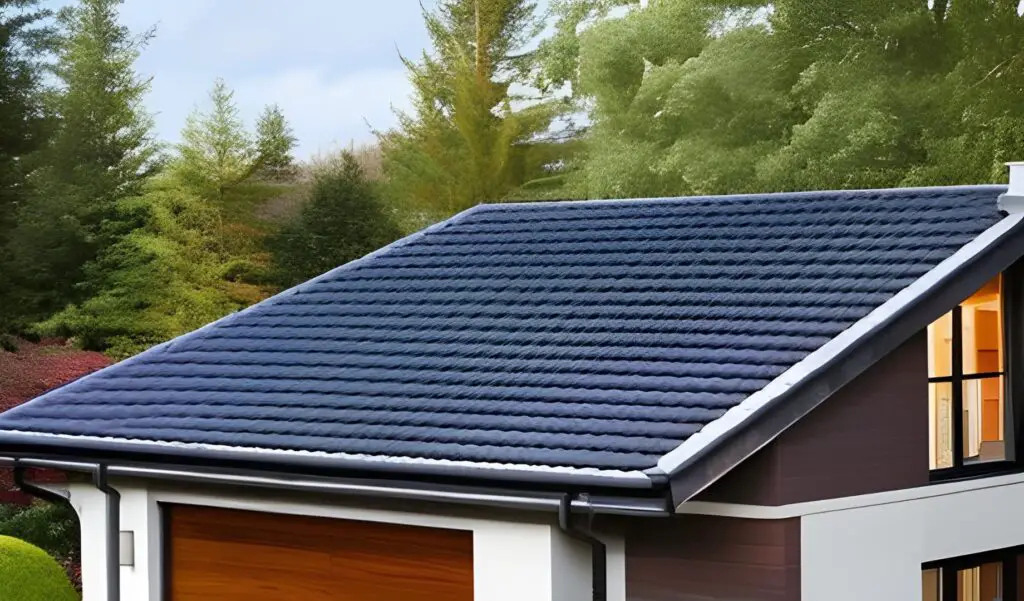
- Type 1: Fiber cement composite tiles – A mix of cellulose fibers, sand, and cement creates a strong and weather-resistant material that can mimic the appearance of traditional clay or slate tiles.
- Type 2: Rubber composite shingles – Made from recycled tires, these flexible yet sturdy shingles offer excellent impact resistance and insulation properties.
- Type 3: Plastic polymer composites – These lightweight tiles are designed to resemble wood shakes or slate but require minimal maintenance compared to their natural counterparts.
The Benefits of Choosing Composite Tile Roofs
If you’re still on the fence about whether composite tile roofs are right for you, consider these advantages:
- Durability: With proper installation and maintenance, composite tile roofs can last up to 30 years, offering long-term protection against harsh weather conditions.
- Eco-friendliness: By using recycled materials in their construction process (and being recyclable themselves), composite tiles help reduce waste and promote sustainability.
- Energy efficiency: The insulating properties of composite tile roofs can help lower your energy consumption, reducing both your carbon footprint and utility bills.
- Variety: Composite tiles come in various styles, colors, and textures to suit any architectural design or personal preference.
So there you have it. Composite tile roofs are an eco-friendly, durable option that offers numerous benefits for homeowners and professionals alike.
If you’re looking for a sustainable roofing solution with style versatility and long-lasting performance, consider giving composite tiles a try.
Single-Ply Roofing Systems: A Lightweight Solution for Low-Slope and Flat Roofs
Let’s talk about single-ply roofing systems.
These flexible, synthetic wonders are perfect for a low-slope and flat roof, offering a lightweight solution with some pretty impressive benefits.
Single-ply roofing materials, such as EPDM, TPO, or PVC membranes, provide excellent waterproofing capabilities while remaining cost-effective.
- EPDM: Ethylene Propylene Diene Monomer is a durable rubber material known for its UV resistance and flexibility in various temperatures.
- TPO: Thermoplastic Olefin combines the best of both worlds – it’s heat-weldable like PVC but also has rubber-like properties similar to EPDM.
- PVC: Polyvinyl Chloride offers superior chemical resistance against oils and grease while being highly fire-resistant.
The installation process is straightforward; just apply the membrane directly onto your roof surface. Before settling on a single-ply system, it’s important to consider the factors that will affect its longevity.
Factors Affecting Single-Ply Roof Longevity
No one wants their roof to wear out too soon.
To maximize your single-ply roof’s lifespan (typically around 20-30 years), be mindful of potential puncture vulnerabilities caused by foot traffic or falling debris.
Seam leaks can also occur if not properly sealed during installation. Regular maintenance checks will help keep these issues at bay.
Choosing a reputable roofing contractor who knows their stuff is crucial for the longevity of your single-ply roof.
In summary, single-ply roofing systems offer an affordable and lightweight solution for a low-slope or flat roof. However, they may have a shorter lifespan compared to other materials due to potential puncture vulnerabilities and seam leaks.
Now, that you have been educated about this roofing option, consider if it is suitable for your upcoming roofing endeavor.
Green Living Rooftops: A Breath of Fresh Air for Your Home
So, you’ve heard about green living rooftops and their numerous benefits, right?
Briefly, let me explain why green living rooftops are becoming a popular choice and what types of systems they come in.
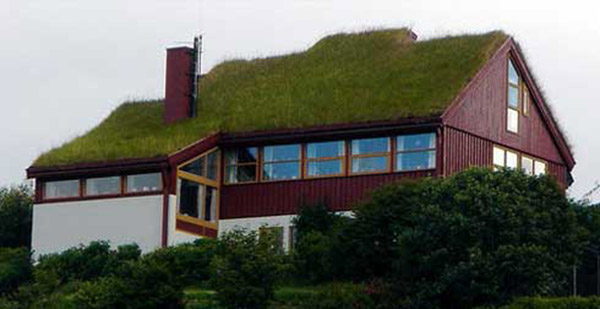
First off, there are two main types of green rooftop systems: extensive and intensive.
An extensive green roof, requires less watering and maintenance than intensive ones but allows only limited plant selection.
In contrast, intensive green roofs, though more demanding in terms of care and water needs, can support a wider variety of plants – even small trees.
- Note: The choice between extensive vs. intensive depends on your specific goals and the resources available for maintenance.
Maintenance Requirements for Green Living Rooftops
No worries. Maintaining a green roof is not as daunting as it may seem at first glance.
To keep your rooftop garden thriving:
- Irrigate regularly.
- Fertilize periodically.
- Weed out unwanted plants.
- Tend to any drainage issues promptly.
You’ll also want to perform regular inspections to ensure the waterproofing membrane and other roofing components are in good shape.
Now, let’s talk about some of the benefits that come with having a green living rooftop:
- Improved air quality.
- Better stormwater management.
- Increase in property value.
- Natural insulation for your home (hello, energy savings).
- Aesthetic appeal and added green space – especially valuable in urban environments.
Pretty impressive, right?
If you’re looking to make a positive impact on the environment while enjoying numerous benefits for your home, consider going green – literally – with a living rooftop.
Blue Roofing Solutions: Sustainable Roofing Alternatives
Let’s talk about blue roofing. This innovative solution is designed not only to reflect sunlight away from buildings but also to store water for later use, such as irrigation.
Blue roofs can significantly reduce cooling costs and provide a sustainable alternative to traditional materials. Are you curious about the components and benefits of this system?
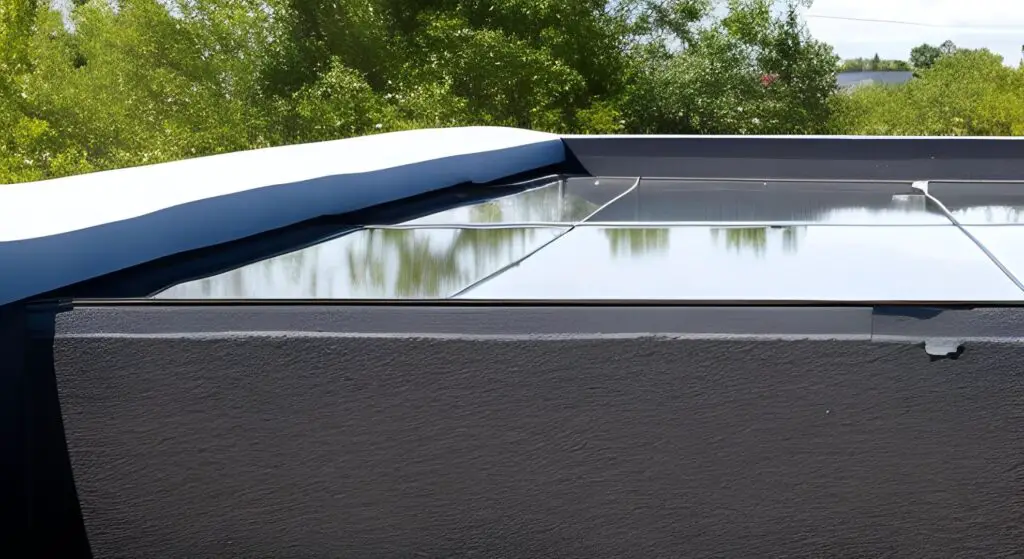
Components of Blue Roofing Systems
A typical blue roof consists of several layers:
- A waterproof membrane that prevents leaks.
- An insulation layer that enhances energy efficiency.
- A drainage layer that helps manage stormwater runoff.
- A retention pond or storage tank where excess water is collected for future use.
Benefits in Urban Environments
The advantages don’t stop there. In urban environments, implementing blue roofs can have even more positive effects:
- Reduced risk of flooding by managing stormwater runoff effectively.
- Promotion of biodiversity through the creation of green spaces on rooftops.
- Improved air quality due to decreased heat island effect caused by reflective surfaces.
For a sustainable roofing solution, blue roofs may be the answer. And if you’re looking for a great roofing material, there are plenty of options to choose from, including metal roofing, flat roofs, wood roofs, rubber roofing, and more.
Whether you’re building your own roof or you’re a roofing professional, such as a contractor, surveyor, or architect, there’s a roofing material out there that will meet your needs.
Some popular options include standing seam metal roofing, rolled roofing, asphalt shingles, metal shingles, three-tab shingles, synthetic, clay tiles, soft slate, and raised seams. So don’t be afraid to explore your options and find the perfect roofing material for your project.
Popular Roofing Materials: Asphalt Shingles and Metal Roofs
Let’s talk about the most popular roofing materials – an asphalt shingle and metal roof.
Asphalt shingle roofs are a favorite among US homeowners because they’re affordable, versatile, and easy to find. Plus, with proper upkeep and attention, these shingles can stick around for three decades.
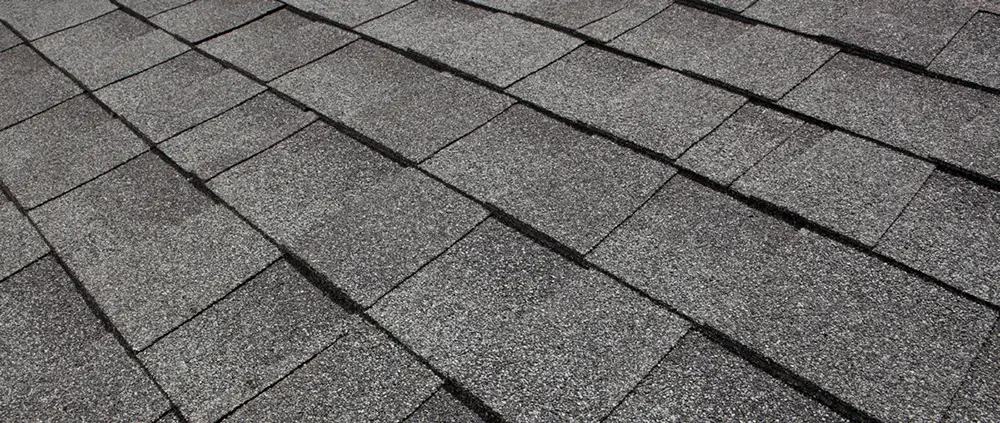
But wait. There’s another roofing material gaining popularity – metal roof
Metal roofs have some serious advantages like durability (lasting up to 80 years), fire resistance, and style versatility. They can mimic various styles like asphalt or wood at prices ranging between $6-$14 per square foot depending on the type chosen.
Pros and Cons of Asphalt Shingle Roofs
- Pro: Affordable and widely available.
- Pro: Easy installation process for DIY enthusiasts or professionals alike.
- Con: Limited lifespan compared to other materials (up to 30 years).
- Con: Potential for damage from extreme weather conditions such as hailstorms or high windspeeds.
Advantages of Metal Roofing Over Other Materials
- Pro: Durability that lasts decades longer than many alternatives (up to 80 years).
- Pro: A variety of styles and finishes to suit any home design.
- Pro: Fire resistance, making it a safer choice for your family and property.
So, there you have it – two popular roofing materials with their own unique advantages. If you’re looking for a good roofing material, consider an asphalt shingle or metal roof.
Individuals building their own roof or roofing professionals, such as contractors, surveyors, and architects, can benefit from these materials. Now go forth and make an informed decision on the best roof replacement for your home.
Wooden Cedar Shake Roofs: A Charming and Eco-Friendly Choice
Let’s talk about wooden cedar shake roofs, shall we? These beauties are not only charming but also boast some eco-friendly perks.
Cedar shakes, made from natural wood, offer excellent insect-repellent properties while giving your home a rustic appeal. The average cost of installation ranges between $5-7 per square foot – not too shabby.
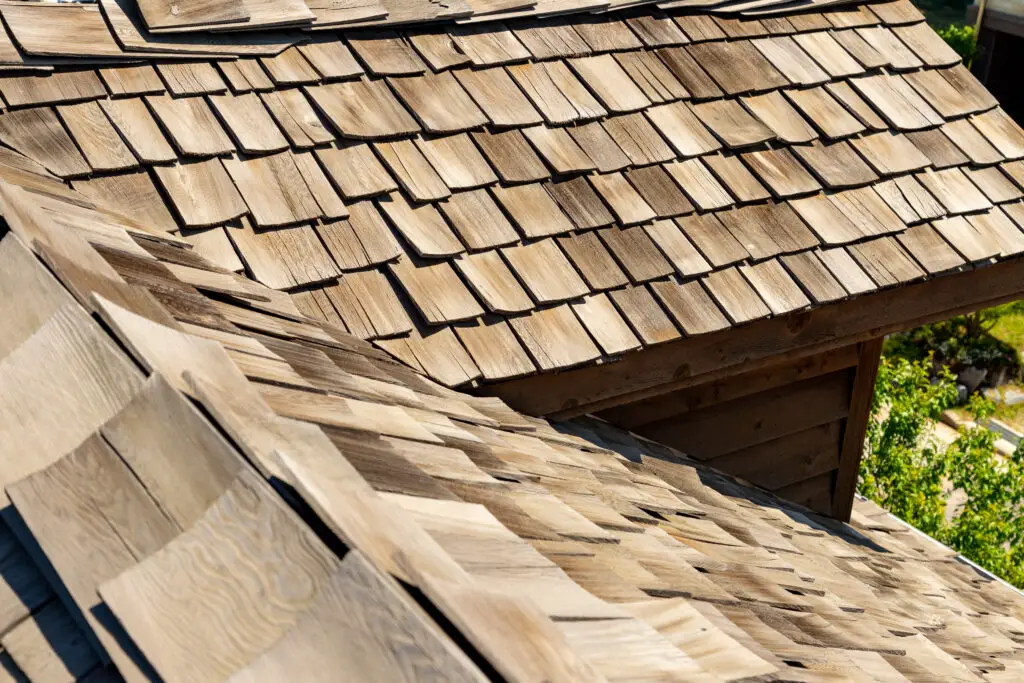
Installing Wooden Cedar Shake Roofs: The Process
Selecting the proper cedar for your area is essential. Next up is prepping the roof deck by installing underlayment materials like felt paper or synthetic membranes.
Carefully lay out the shakes in rows with proper spacing and secure them using stainless steel nails or staples. Voila.
Factors Affecting Lifespan of Wooden Rooftops
While they’re undeniably attractive, cedar shake roofs have their limitations when it comes to lifespan factors:
- Maintenance: Regular cleaning and treatment can help prolong their life expectancy (usually around 20-30 years).
- Humidity & Moisture: These roofs may struggle in high-moisture environments where mold growth is common.
- Risk of Wildfires: In areas prone to wildfires, wooden rooftops pose a higher risk compared to other roofing materials like metal or clay tiles.
So, if you’re considering a cedar shake roof for your home, weigh the pros and cons carefully before making your decision.
Looking for more roofing alternatives? Check out our comprehensive guide on various roofing materials here.
Clay Tile Roofs: A Durable and Stylish Choice
Are you tired of constantly worrying about storm damage to your roof? Well, let me introduce you to the wonderful world of clay tile roofs.
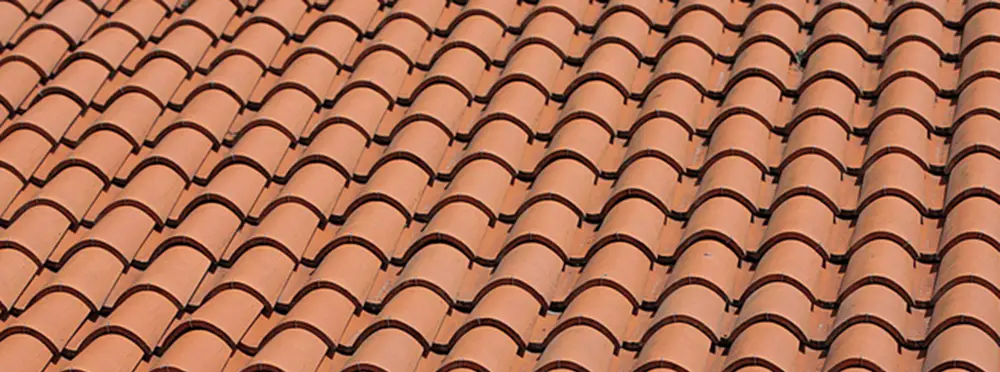
These bad boys can withstand wind speeds up to a whopping 150 mph, making them an ideal choice for those living in storm-prone areas. According to HomeAdvisor, clay tiles have an average installed price range between $6-$15 per square foot, so they’re not only durable but also budget-friendly.
Benefits and Drawbacks of Clay Tile Roofs
- + Long-lasting: With proper maintenance, these tiles can last over 100 years.
- + Fire-resistant: Clay is non-combustible, providing excellent protection against wildfires.
- + Environmentally friendly: Made from natural materials like earth minerals and water – no harmful chemicals involved.
- – Heavyweight contender: Their weight may require additional structural support for some homes.
Maintenance Tips for Clay Tile Rooftops
No roof is perfect, but with some tender loving care, your clay tile rooftop will serve you well for many years to come.
- Moss be gone. Keep an eye out for moss growth on your tiles – it’s important to remove it promptly to prevent damage.
- Inspect your roof regularly for cracked or broken tiles, and replace them as needed.
- Clean gutters and downspouts frequently to ensure proper water drainage.
So there you have it – clay tile roofs offer a stylish, durable, and eco-friendly alternative to other roofing materials. If you’re considering a roof replacement, a clay tile is definitely worth considering. Consult with a professional roofing contractor who can help guide you through the process.
FAQs in Relation to Roofing Alternatives
What are the cheapest roofing alternatives materials?
Asphalt shingles are generally considered the cheapest material for roof replacement due to their low cost per square foot and ease of installation. However, they may not last as long as other materials like metal or composite tiles. Explore various roofing materials costs before making your decision.
What are the roofing alternatives materials?
There are numerous options for roofing materials including an asphalt shingle, metal roof, wooden cedar shake roofs, clay tile roofs, synthetic roofing, composite tile roofs, single-ply systems (EPDM/TPO/PVC), green living rooftops and blue roofing solutions. Each option has its own advantages and drawbacks based on factors such as durability, sustainability, and aesthetics.
What is the cheapest way to cover a roof?
The cheapest way to cover a roof typically involves using asphalt shingles or roll-roofing materials that have lower upfront costs compared to other roofing alternatives. However, it’s important to consider long-term expenses such as maintenance and potential replacements when choosing budget-friendly options. Compare roofing materials costs to make an informed decision.
Roofing Alternatives – Recap
For DIYers and contractors alike, there is a wide range of roofing alternatives to choose from. From synthetic slate and composite tiles to a green roof and blue roofs, each material has its own set of advantages and installation requirements.
It’s important to weigh the pros and cons of each type of roofing material before making a decision that fits your budget, design preferences, climate considerations, and maintenance needs. Whether you’re looking for an eco-friendly option or one that can withstand extreme weather conditions, there is a solution out there for you.
If you’re looking for a good roofing material that is durable and long-lasting, metal roof is a great option. It’s perfect for a flat roof and can be used for roof replacement or new construction. Standing seam metal roof is a popular choice for its sleek appearance and raised seams that provide extra protection against leaks.
Wood roofs are another roofing alternatives material that can add a natural and rustic look to your home. However, they require more maintenance than other materials and are not recommended for areas with high fire risk.
Living roofs, also known as green roofs, are becoming increasingly popular for their environmental benefits. Living roofs are covered with vegetation and can help reduce energy costs, improve air quality, and provide a habitat for wildlife.
Rubber roofing is a cost-effective option that is easy to install and maintain. It’s also durable and can withstand extreme temperatures and weather conditions.
If you’re looking for a more traditional option, asphalt shingles are a popular choice. They come in a variety of colors and styles, including three-tab shingles and architectural shingles.
Metal shingles are another alternative that can mimic the look of other materials, such as wood or slate. They are lightweight and easy to install, making them a great option for DIY projects.
Synthetic slate and clay tiles are also available for those who want the look of natural materials without the high cost or maintenance requirements. Soft slate and raised seams are other options to consider.
Hi, I’m Jim. I was a roofing constructor for 20 years, before deciding to start myrooff.com and gather the best content about roofing. I love woodworking and construction and it was only natural for me to start this passion project of mine. Thank you for visitng.

